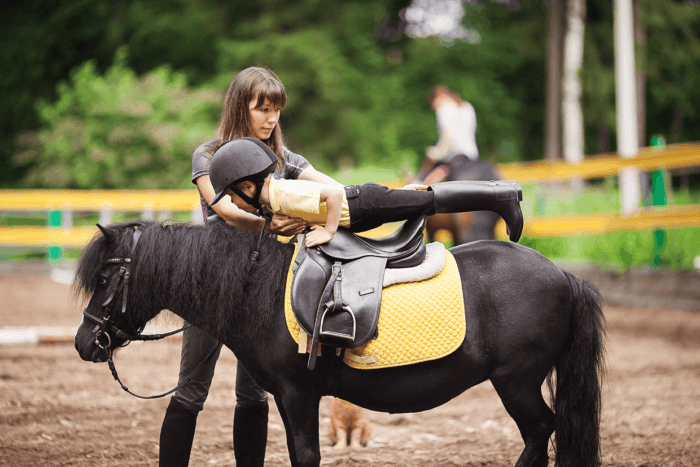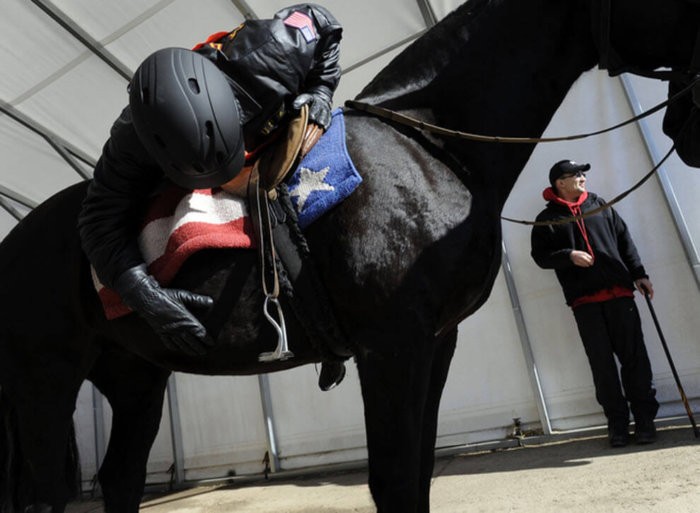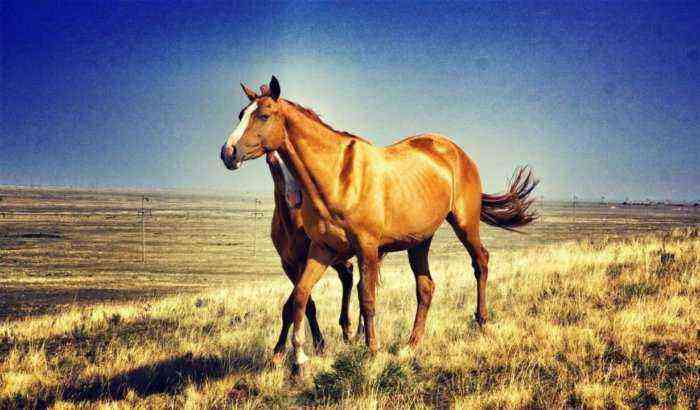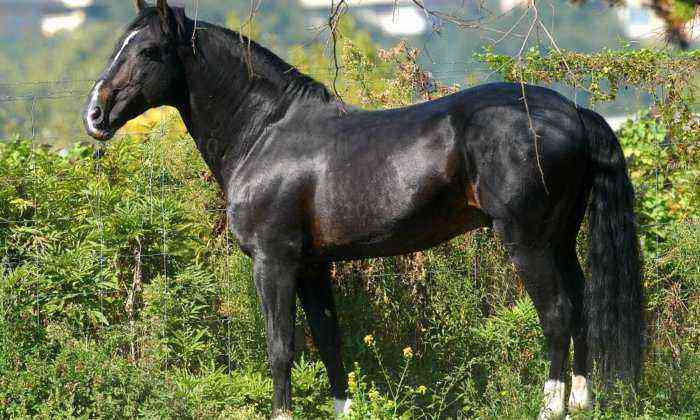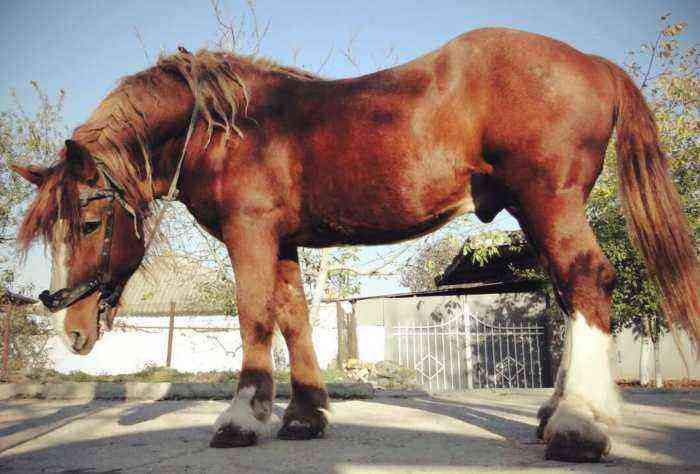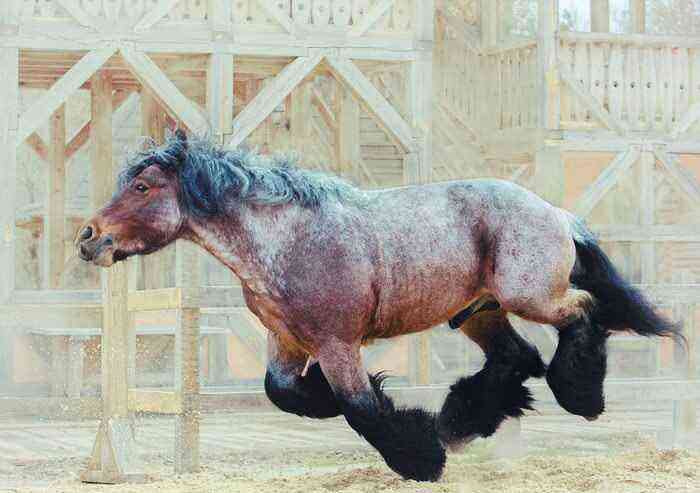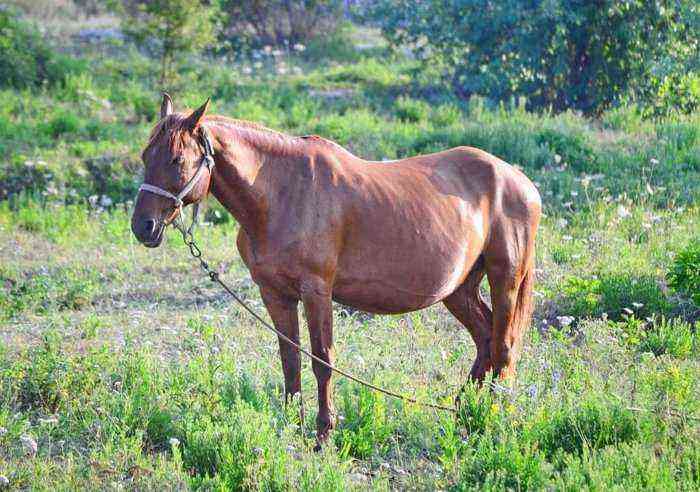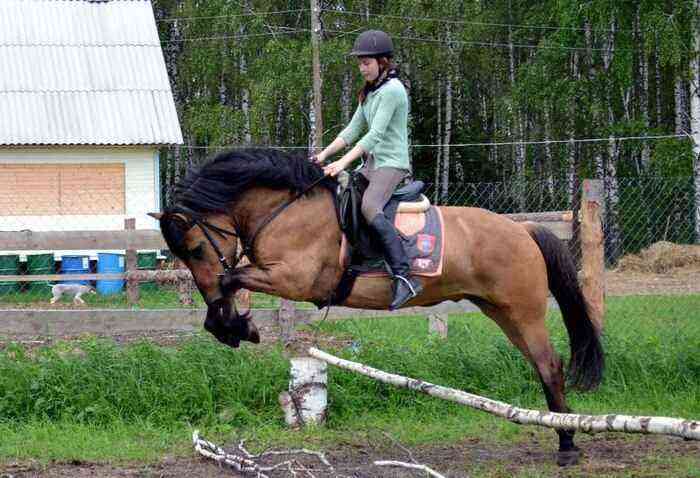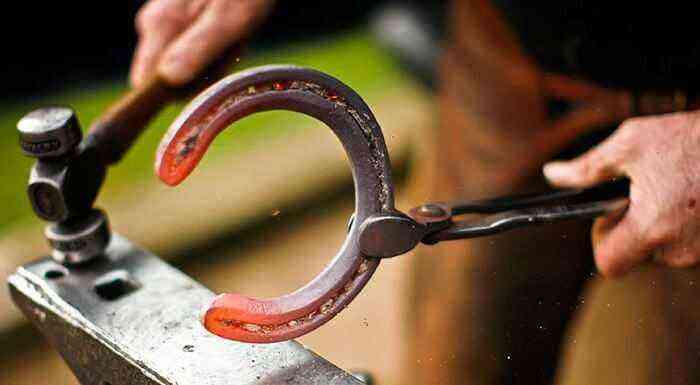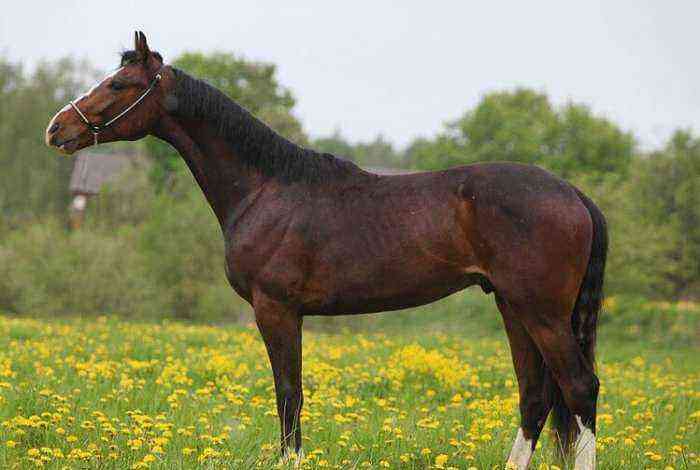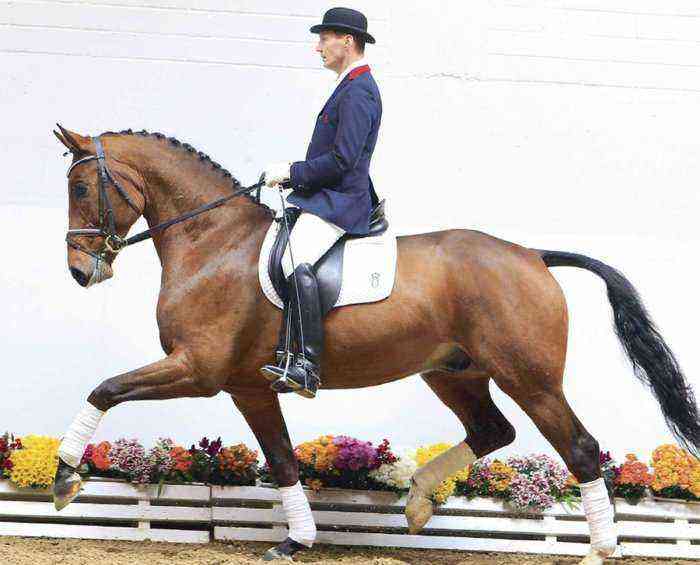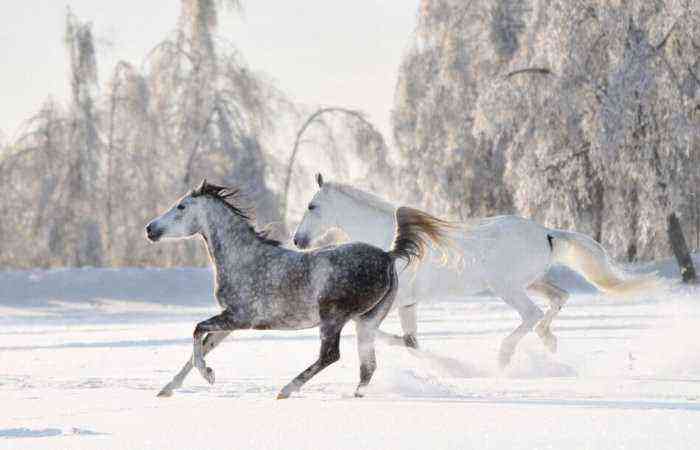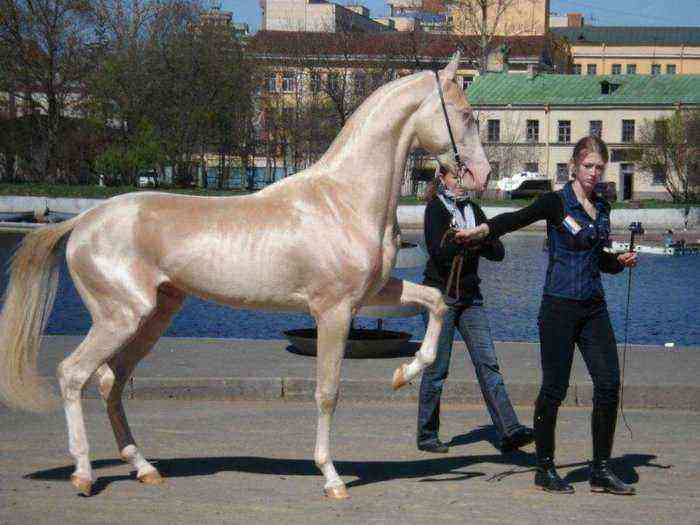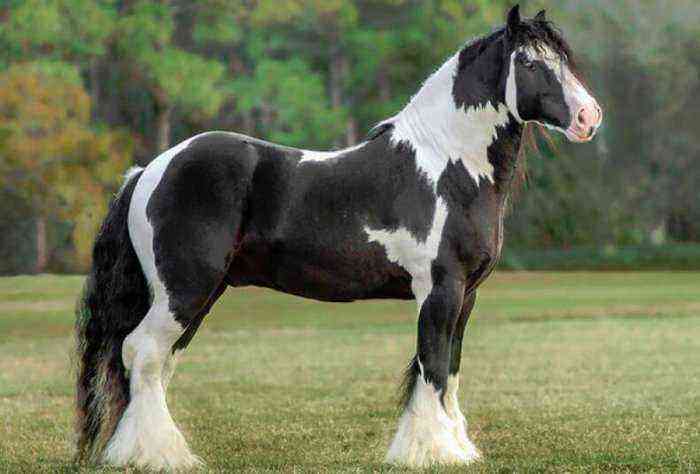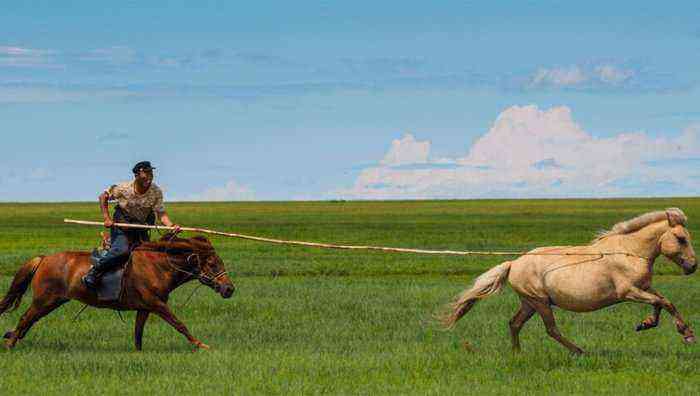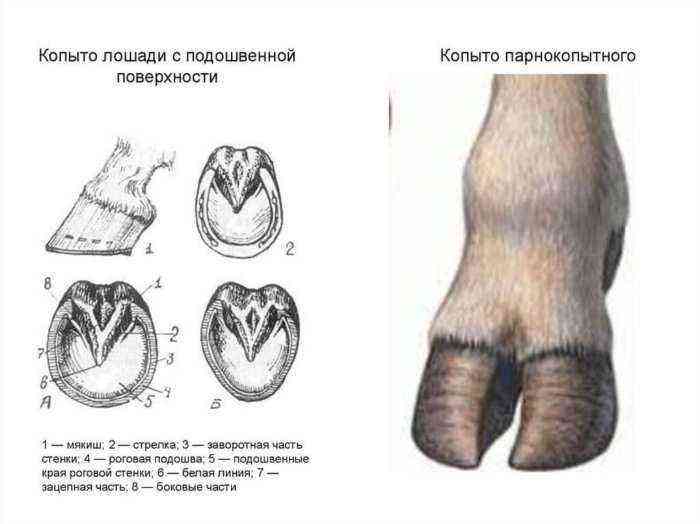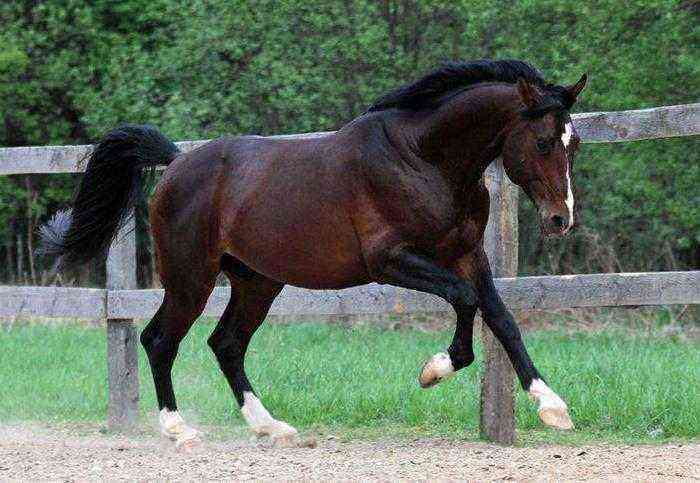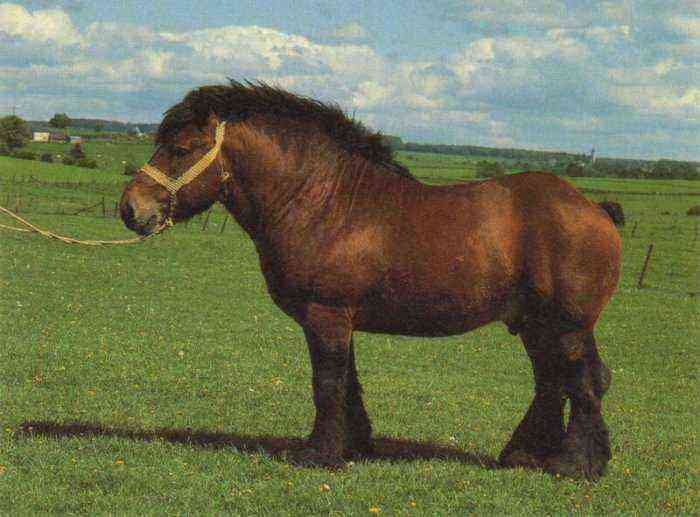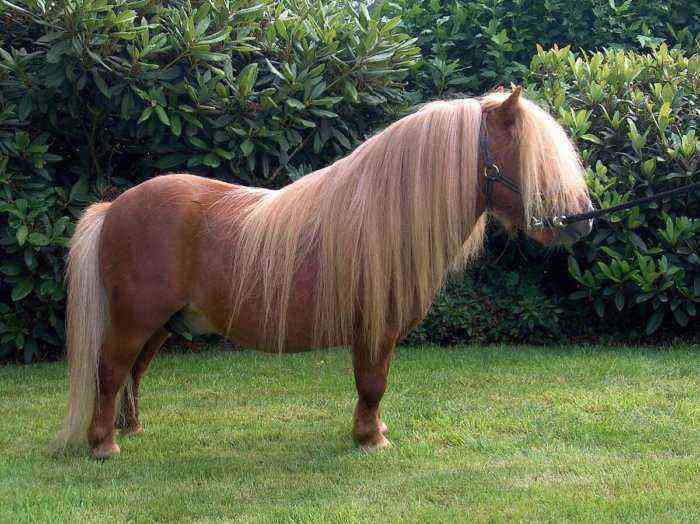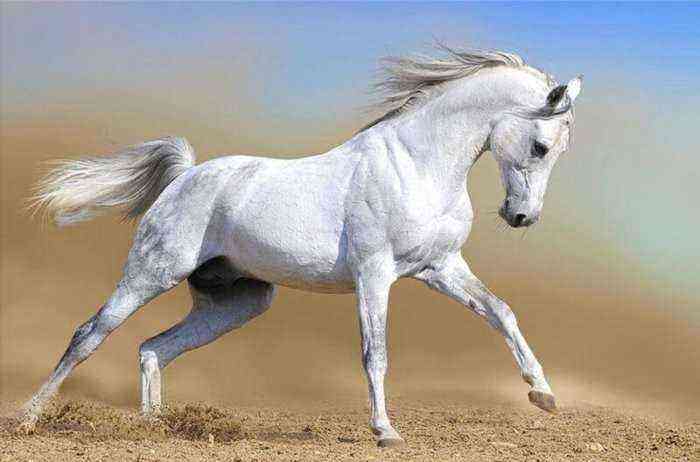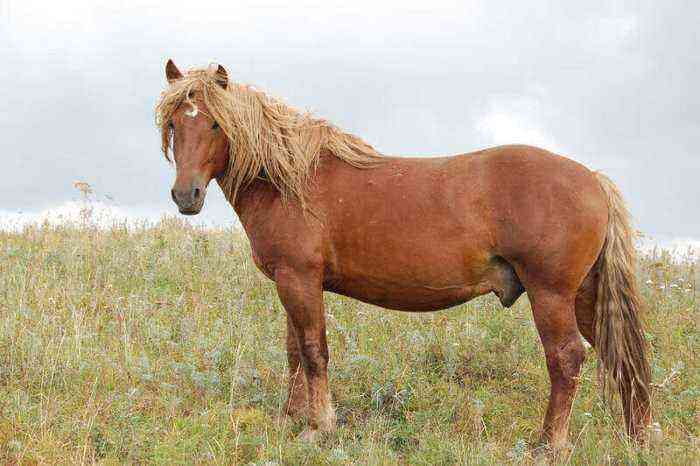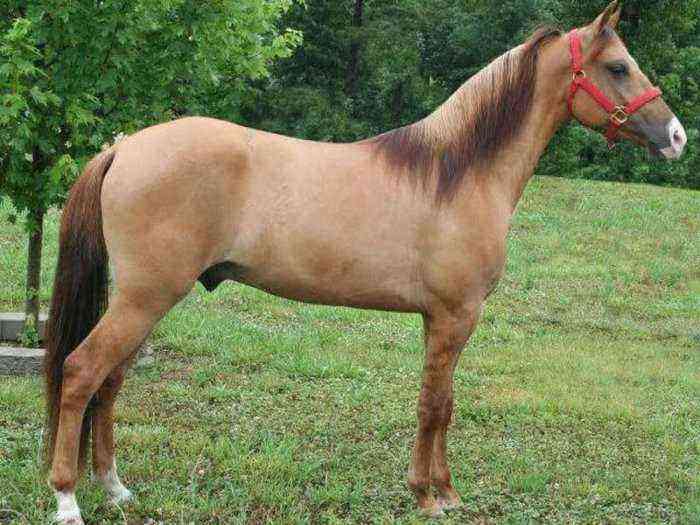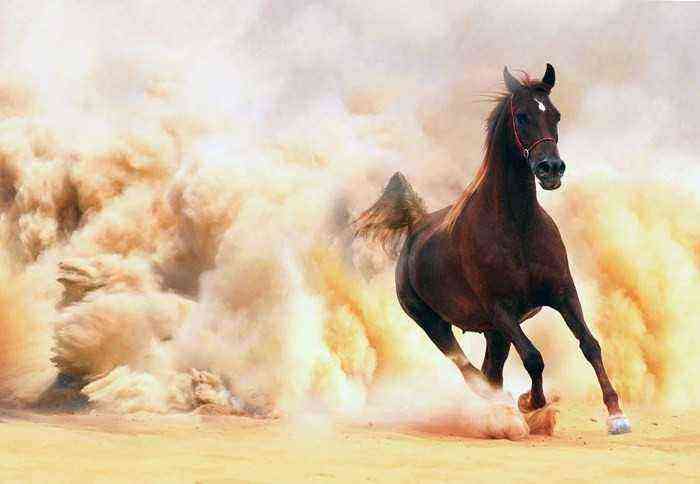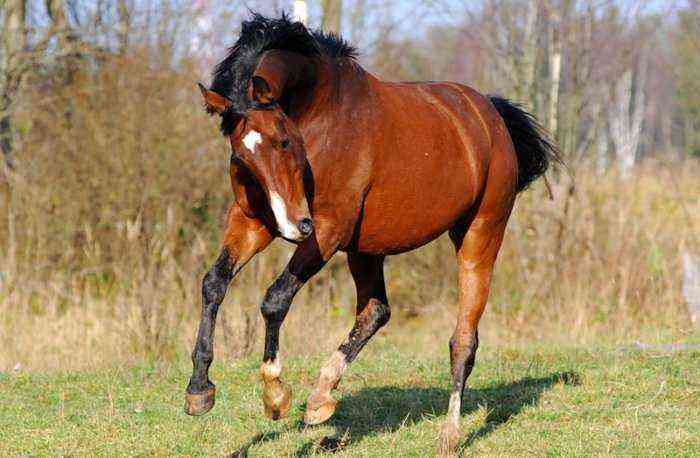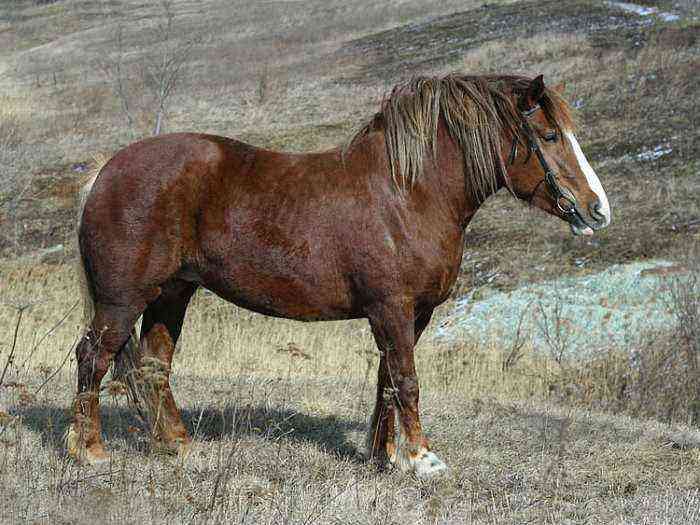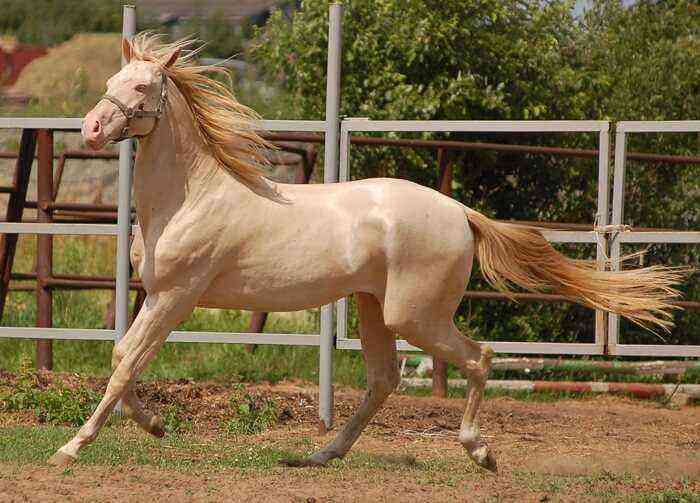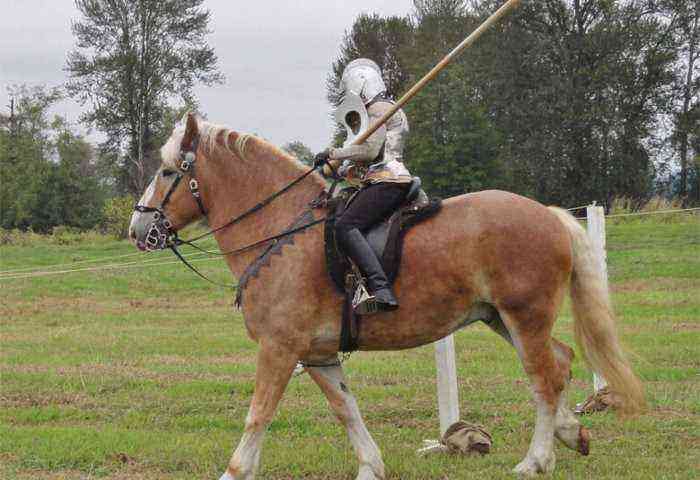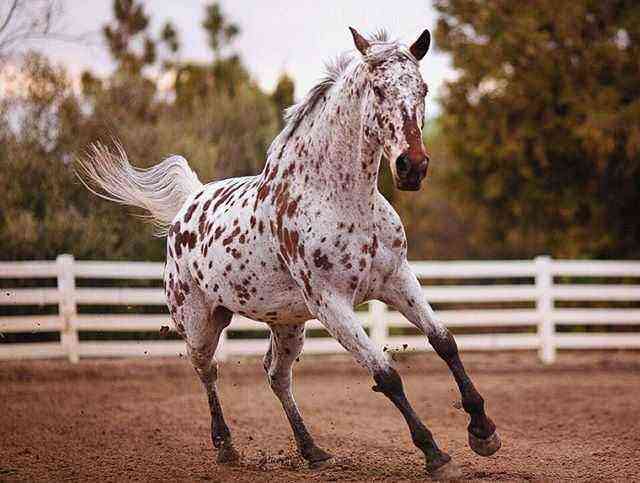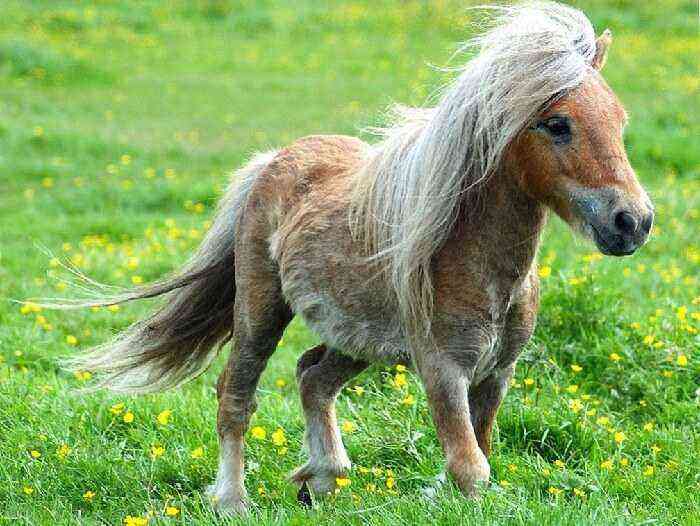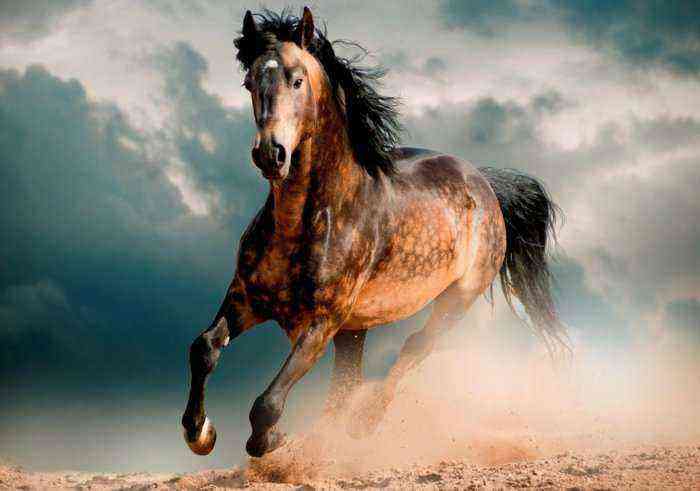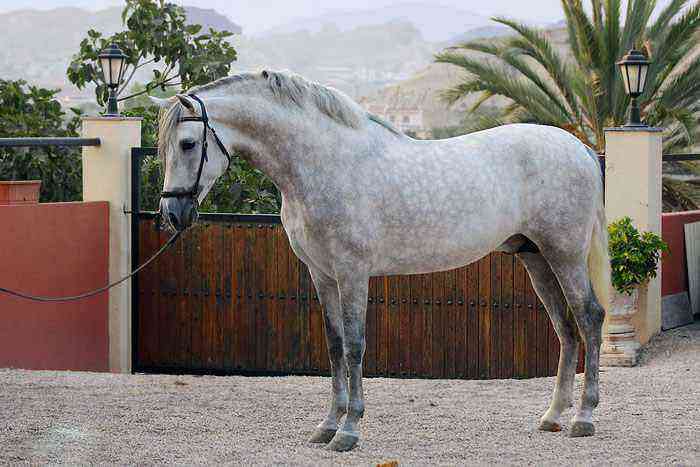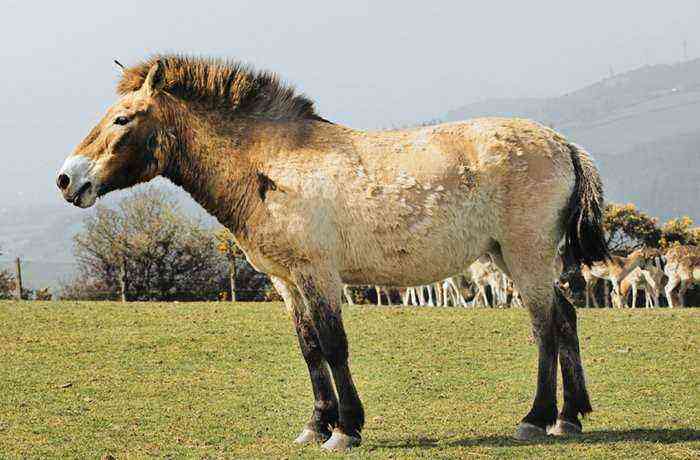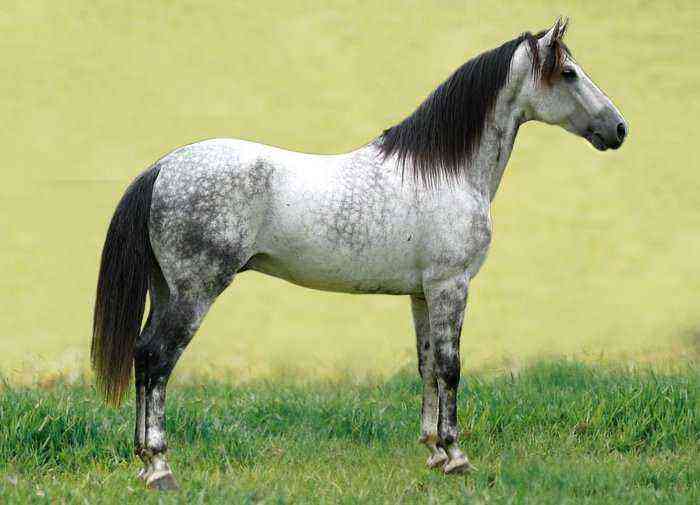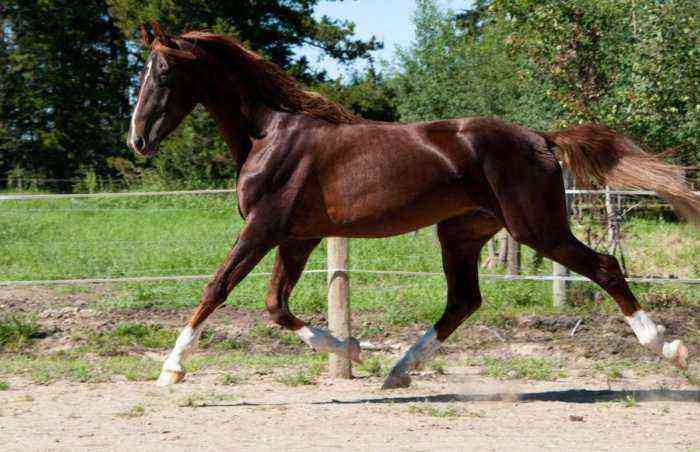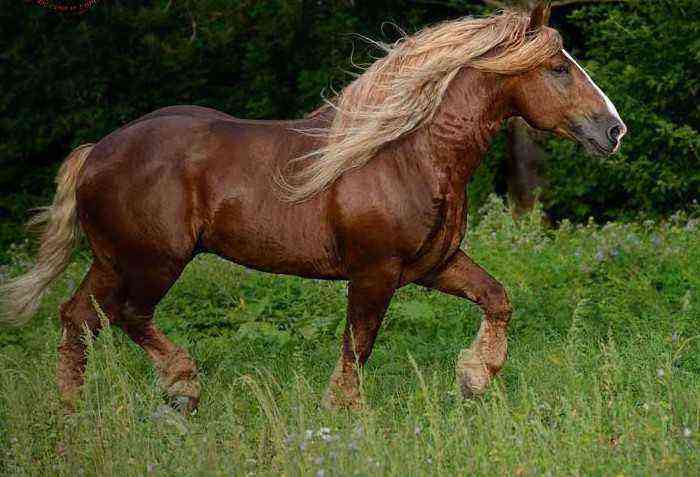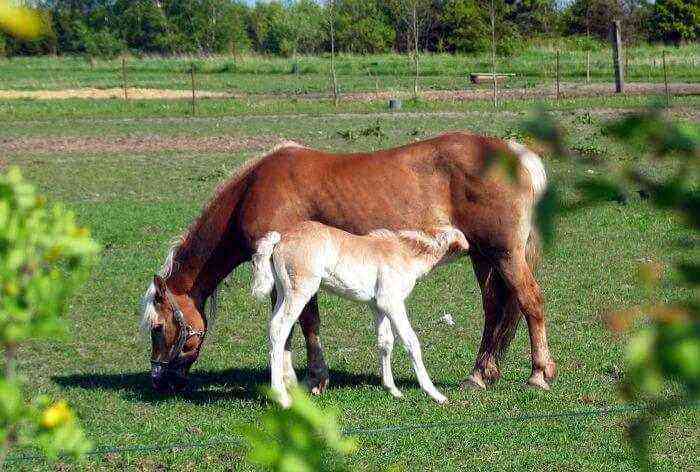Horses are naturally smart, easily remember commands and, with proper training, unquestioningly listen to the owner. But in order for a young, restive animal to behave in this way, it needs proper training. Not all amateurs know how to properly train a horse to ride and often give up without achieving the desired result. Meanwhile, it is not so difficult to teach an animal to walk under the saddle. The main thing is not to rush and stick to a number of important points.
Riding
Acquaintance and habituation
The horse is a living being with its own character. Therefore, any training begins with contact and acquaintance. Moreover, already at this stage, the attitude of the animal to the future rider is laid, and hence the features of interaction with him.
For training, as a rule, horses are selected that have reached the age of 3 years. But juveniles, who have been infrequently in human surroundings, are quite inexperienced and may be distrustful of strangers. In this case, the acquaintance is carried out in several steps:
- The rider slowly approaches the animal from the left side and speaks to it in a calm, friendly tone, pronouncing the name and encouraging. Horses through the timbre of the voice determine the intentions of a person, and such an approach can calm them down and dispose to him.
- Approaching, you should gently pat the horse on the neck and stroke it. Living creatures react extremely positively to such a caress. If the horse’s ears are pressed to the head, she is nervous or afraid. It is necessary to stroke and talk to the animal until it relaxes and its ears rise.
- Turn your back to the horse and gently touch his neck with it. Such contact will indicate the absence of evil intentions, which will further dispose the horse to the person.
Some novice riders use treats when meeting, but experienced instructors do not encourage their use at this stage. Since without them it is possible to establish a stronger connection between a person and a horse.
After a successful acquaintance, you should consolidate the connection by getting used to each other. This is facilitated by the personal feeding of the animal, its bathing, care, cleaning the stall in which it is contained.
Important! The longer and more often a person will be in front of the horse, the more he will trust him, and the less time training will take.
But it is worth remembering that at the stage of addiction and in the process of learning, affection and warmth should not be abused. Horses, like humans, are self-willed. She reluctantly fulfills the requirements of the rider to the detriment of her interests. Therefore, at times you should behave with the animal strictly (but without aggression). If in tandem the dominant role belongs to the horse, and the rider is constantly inferior, there can be no question of any obedience.
Correct landing
After the horse has got used to the owner, trusts him and obeys, you can proceed to direct riding lessons. The basis in this case is the correct fit in the saddle. It is carried out as follows:
Mounting
- Approaching the horse from the left side, grab the mane in the withers area with your hands and at the same time fix the reins. You should not take on the saddle, as it can move out.
- Without loosening the grip with your hands, put your left foot in the stirrup.
- Jump up to the saddle, throw the right leg and fix it in the stirrup.
- Tighten the reins comfortably.
- With the help of the hips, fix in the saddle.
Attention! In the process of landing, in no case should you jerk the reins strongly. Movements should be smooth. Otherwise, the animal may get scared and throw the inexperienced rider to the ground.
Sitting in the saddle, you should align your back, relax your body as much as possible, eliminating any stiffness. During the movement, you should behave calmly and repeat the rhythm of the movement of the animal. A man on his back is an unusual discomfort for the body of an unbroken horse. And if the rider is frightened and behaves stiffly, excessively squeezing the horse’s hips, pulling the reins, inconvenience and pain are greatly increased. In this case, the horse may subconsciously try to throw off the rider.
Some riders use spurs for riding and landing. But they are only suitable for further stages of learning. In the process of developing the correct position, they can cause the animal to associate riding with severe pain. And since horses have a good memory, this can be very harmful to further learning.
Instructions: how to teach a horse to ride
After the landing is mastered, the rider continues to work, teaching the animal how to move under the saddle. Such training includes methods of reinforcing various commands in the animal. The main ones at this stage are: moving forward, moving from one gait to another, slowing down, stopping, and others. Considerable importance in this process is the movement of the reins. But still, one of the main elements of control is the leg.
Leg use
The concept of “leg” is understood as a slight movement of the legs, which gives the animal a command to move forward, and also determines for it a specific pace of movement. Moreover, the correctly incorporated ability of the horse to respond to such a movement is the key to the success of all further training and interaction with it.
Correctly fixed leg
A properly fixed leg implies a minimum interval of time from pressing the legs to the execution of the desired command. Also, training is considered successful if the horse, after using the leg, maintains a given pace on its own until another command is received.
Animal leg training is carried out by several methods. Some instructors prefer to use spurs or a whip when doing this. Moreover, the necessary movement is made first, and if the horse does not listen, the rider easily stimulates with spurs. This approach allows you to significantly speed up learning.
There are also complete opponents of such a technique. In their work, they mainly use methods to encourage the horse.
But whatever the method of training, the rider must always remember that it is he who is guilty of mistakes and insufficiently quick perception of the given moments. A horse naturally knows how to move at different paces, jump, overcome various barriers and obstacles. But if she does not do this, then it is the rider who is to blame, who makes one of the following errors:
- tries to start training before the animal is fully accustomed to it and has begun to trust;
- does not fully own the leg and the basic rules for its execution;
- does not understand the way the horse thinks and its way of perceiving what is happening around;
- does not have sufficient knowledge and training skills.
If at least in one of the moments the rider is not strong, the animal will not learn to react sensitively to the leg. In this case, it is better to turn to more experienced athletes and instructors, entrusting the training to them.
Treats as a reward
In horse breeding, various treats are used not only to pamper the pet, but also to reinforce the behavioral mechanisms necessary for the rider in the horse. The horse understands that after this or that action he was rewarded with delicious food, which causes him pleasant associations. With a certain number of repetitions, such an association is deposited in the subconscious of the animal, and it begins to fulfill commands willingly.
As treats, horses eat with pleasure:
- Salt. Many do not know, but horses love this product the most and willingly eat it from their hands. Table salt contains a lot of sodium, which has a beneficial effect on the digestive system, normalizes the water balance in the body. In addition, salt accelerates the recovery of muscle tissue after heavy loads.
- Carrot. Horses also eat such a root crop with great pleasure. In addition to the fact that it is juicy and has a pronounced taste, the vegetable contains a large amount of vitamins that are beneficial to the body.
- Rusks. Such a delicacy will not bring special benefits to the animal’s body. But at the same time, it gnaws pieces of dried bread with great pleasure.
- Apples. Before serving, such a fruit is cut into four slices. Sweetness helps to strengthen the immune system of the horse, and also provides a certain amount of vitamins.
- Sugar. Refined cubes can significantly cheer up a horse and act as a significant reward for its obedience. But to abuse such a delicacy is not worth it.
Important! Whichever of the listed rewards the rider chooses, when feeding, you should take care of your safety. Delicacies are given exclusively on a wide open palm. If the fruit is tightly grasped with fingers, they may suffer, since the animal simply does not see that it is biting.
Descent from the horse
Another important point in learning to ride is the correct descent. This not only guarantees the safety of the rider, but also minimizes discomfort for the animal.
Proper descent after stopping the horse
The correct descent after stopping the horse is as follows:
- The rider tightly grabs the mane at the withers of the animal, holding the reins in parallel. Some instructors allow the front edge of the saddle to be gripped, but it can twist on the animal’s back.
- Further, the rider leans forward without loosening the grip.
- The right leg is gently thrown over the back of the horse.
- After that, the rider smoothly lowers to the ground and pulls his left leg out of the stirrup.
The descent is carried out exclusively to the left side of the horse.
Conclusion
Horses have been used by man for riding for centuries. But for the intended use, young mares and stallions must first be trained, and this process without proper experience and skills can be not only ineffective, but also dangerous for the rider. Therefore, before starting work with a horse, it is necessary to carefully study the main points of such a process.
